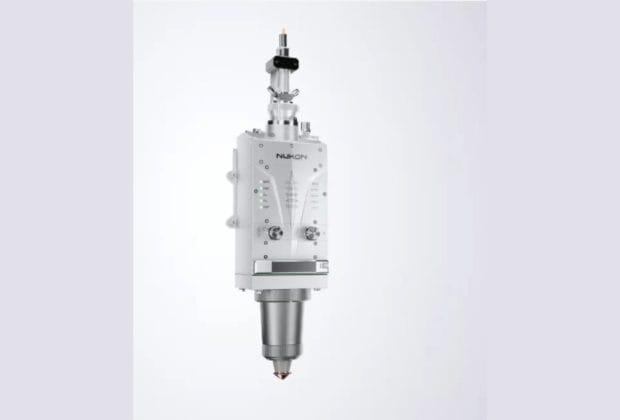Fibre laser cutting machines have revolutionised precision manufacturing, offering unmatched speed, accuracy, and efficiency.
At the heart of this technology lies a sophisticated optical system housed within the cutting head.
The cutting head is essential to the laser cutting process as it delivers the energy of the laser to the workpiece. The Nukon NLCH is an example of how a high quality cutting head can enhance the performance of a fibre laser cutting machine.
This blog explores how the optics work together to transform high-powered laser light into a finely focused beam capable of slicing through metal with surgical precision.
The optics in a fibre laser cutting head serve three primary functions:

Here’s a breakdown of the main optical elements inside a fibre laser cutting head:
| Component | Function |
| Optical Fibre Core | Transmits the laser beam from the source to the cutting head. |
| Collimating Lens | Converts the diverging beam into a parallel beam. |
| Focusing Lens | Focuses the collimated beam to a small spot for cutting. |
| Protective Windows | Shields internal optics from dust, slag, and cutting gases. |
| Nozzle | Directs assist gas and laser beam onto the material. |
| Ceramic Holder | Holds the nozzle and isolates it electrically for sensing. |
Here’s a simplified diagram of the optical path inside a fibre laser cutting head.
Step-by-Step Beam Journey:

Modern cutting heads often include:
These innovations ensure consistent cut quality across varying materials and geometries.
Even microscopic contamination or vapour on lenses can scatter the laser beam, reducing power density and cut quality. Regular maintenance and protective lens replacement are essential to preserve performance.
The optics in the Nukon NLCH fibre laser cutting head are a masterclass in precision engineering.
From beam collimation to real-time focus adjustment, each component plays a vital role in delivering high-speed, high-accuracy cuts.
As laser technology continues to evolve, we can expect even smarter, more adaptive optical systems from Nukon that push the boundaries of industrial fabrication.
Want a chat with Steve Haddrell about your fibre laser cutting plans?
Email sales@nukonlasers.co.uk